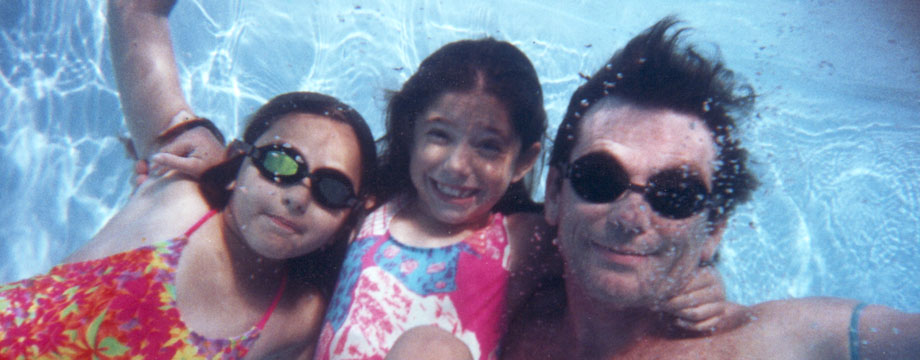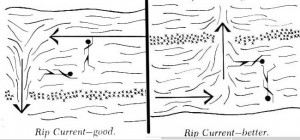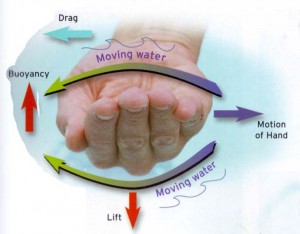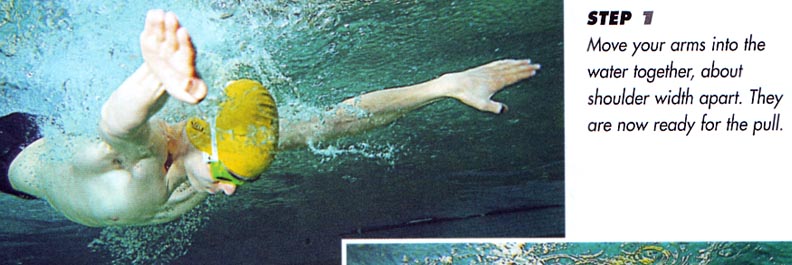Maybe I’m being picky or just too easily amused, but when reviewing swimming books, I would like to point out some of the more eccentric and idiosyncratic material that is in these books. My smart *ss comments are for entertainment purposes only, and I’m not going to make fun of techniques that have become obsolete or eccentric as time goes on.
From The Complete Beginner’s Guide to Swimming
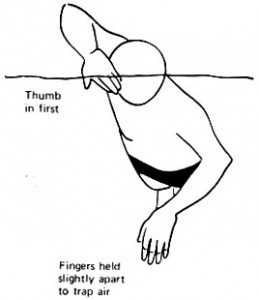
Two left hands? Poor body alignment. Fingers trapping AIR?? Bad Stuff.
This freestyler appears to have 2 left hands or a broken wrist. And where did they ever get the idea that it was good to “trap air” with the fingers? The author’s husband helped write this book, and he is supposedly a PHYSICIST! Finally, his body position is really poor with the hips way too deep in the water.
These attempts at illustrating how to deal with rip currents look like some sort of primitive cave art. What was the author thinking? Just for good measure, the text throws in terms like “littoral” rip currents. Wow–that might come in handy on Jeopardy–NOT!
From Teaching Swimming Fundamentals (by YMCA)
The diagram from heck. Note the extreme cupped hand–it is not a hydrofoil!
Now here’s the drill to explain Bernoulli:
Have students stand in shallow water and give each student a kickboard.
“Place you arm and hand on the kickboard. Move the board back and forth on the surface of the water. Pitch your hand out when you move the board outward. Pitch you hand in when you move the board inward. See how fast you can move the board back and forth without losing the kickboard.” (The board should stay in place.)
Why does the board stay in place? Can you feel the pressure of the board against your hand?” (The board stays in place because the water molecules on the top of the board are moving faster, creating less pressure, and so the water on the bottom of the board is lifting up.)
Comment: CONFUSING! BOGUS!! I thought the board was on the surface–not under water. Kickboards usually have squared edges and are quite buoyant. When you’re pushing down, the pushback due to buoyancy creates friction between your hand and the board–that’s why it doesn’t move relative to the hand. There must be a better way to illustrate this! Better yet, just omit it from the book entirely!!
From How to Improve at Swimming, by Paul Mason
Here we go with more graphic goofiness from 2008. Let’s start with some messed up freestyle imagery.
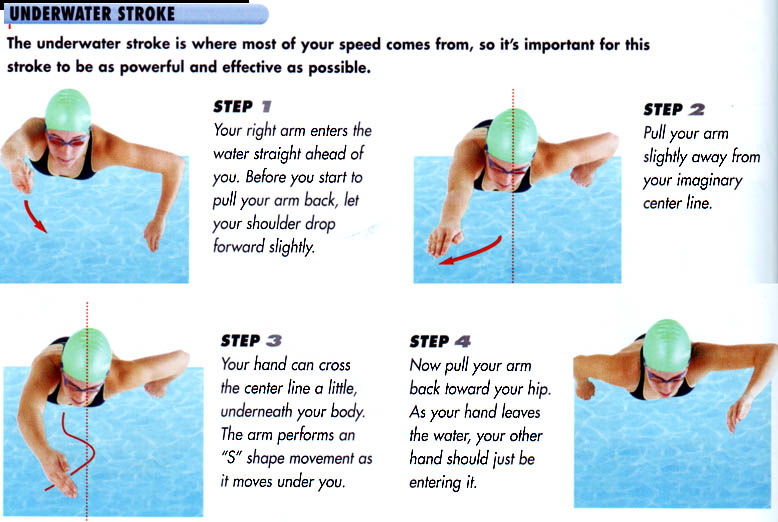
No body roll. Arms way outside of centerline. Steps 1-4 all have odd hand positions relative to stroke motion. Way wrong–do not use these images for anything but a laugh!
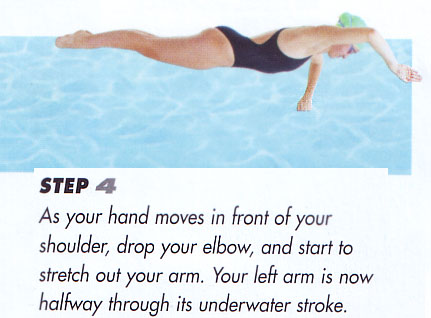
Left hand appears as a fist and the right hand is pointing outward (awkwardly) and not efficient pulling on the water at that angle!
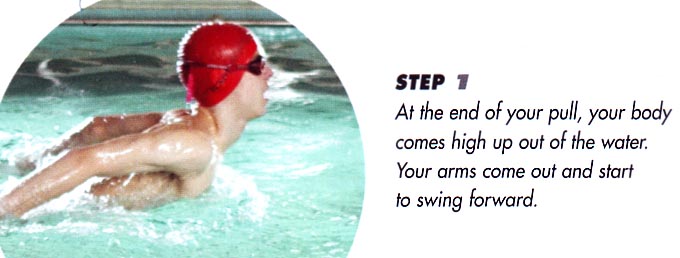
This is in the “Basic Butterfly” section. Is he pushing off the bottom or what? Lifting your head up too far will cause your butt to drop and your stroke will be a struggle. Why not show it correctly? This makes the most difficult stroke even harder. The right way is easier!
Finally, the classic mismatch of caption and photo:
From The Young Swimmer, by Jeff Rouse & Rick Cross
This is the book had such weirdness that it inspired me to start a collection of these images.
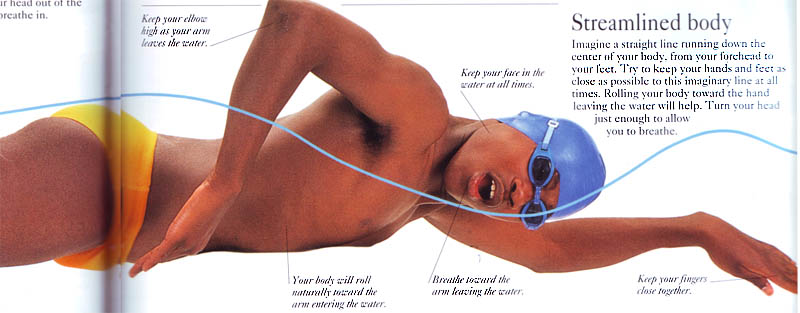
Where to begin? The giant bow wave? The early arm pullout? The face out of water?
The early pullout of his right arm is puzzling. At his lower ribcage/abdomen, his hand should still be under his torso, with the elbow still in the water. This photo with the fake waterline also indicates the swimmer has a “bad attitude.” He obviously takes delight in dissing the captions: Where’s the body roll? Why is he not keeping his face in the water?
Hey Everybody, let’s do the GLIDE…
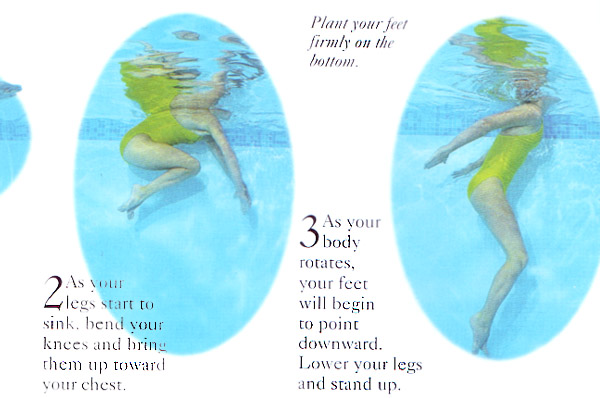
Bottom? WHERE’S THE BOTTOM—H E L P ! !
How about some help for beginners, just learning to float and finish a front glide in water where they can still touch the bottom?
“Plant your feet firmly on the bottom.” Simple enough! Sure, Jeff’s got that covered.
Ooops! They forgot to use the shallow pool for the underwater photo shoot. No worries! Note how they cropped image 3 so that you can’t tell she’s still in deep water. Seems like a mean trick to play on a beginner!
Finally it’s STUNT DRILL time!
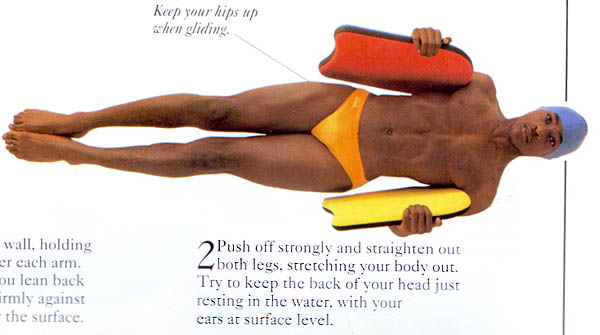
With some practice, I can see how comfortable a beginner might be holding 2 kickboards and doing a back glide this way. Maybe this is how Jeff Rouse (Olympian backstroker) got started–who am I to say? After all, it’s not in the book by accident!
More to come!! The new stuff will be at the top of the page.

